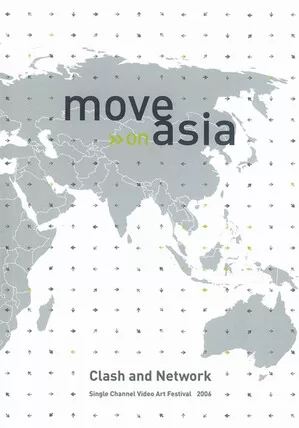Clash and Network in the Age of Globalism – essay by Simon Maidment & Vikki McInnes Australian Curators, Move on Asia exhibition
The erosion of geography for the benefit of infography: the Internet and the facilitation of travel have allowed the formation of new communities bound by interests and causes rather than by location. While the physical neighbourhood will always remain a factor in the creation of dialectics (artistic and other), the redefinition and primacy of connectedness is becoming a fundamental factor.[i]
While contemporary art doesn’t circulate within mainstream culture in the Asia Pacific to the extent it does in Europe and America, the model of international art fair and biennale presentation continues to proliferate and impact our region. This is, in part, due to the shift Camnitzer describes above, towards information based geographies, rather than physical conditions. Communication technologies, accessible international travel, and the impulse towards globalisation combine to redefine what was once a country’s culture, constrained and delineated somewhat by its borders. This has led to the creation of a global community from former pockets of cultural activity, all of us speaking the same art language, sharing references and influences. The artist in Iceland, and the curator in Brazil consider the same essay on Documenta, and access the same images from Venice, with similar ease. The result is that artists, their work, and the ways we disseminate it through culture often become internationalised, commodified and homogenised.
This liquefying of place is an element that both the Australian works in this exhibition share. Their inclusion into a regional survey such as Move on Asia seems apt as both artists attempt to complicate, and extend the experience of their work by foregrounding content and narratives which are non-specific in terms of location, audience, and points of view. Milne’s work operates in interstitial space and Mountford’s in the historical moment, but both are wholly articulated by the placement of the artist/self into the work. As the embodiment of a generic protagonist, the artist becomes someone onto whom we project our selves, through, dare we say, a ‘shared’ experience.
If contemporary art has become more global and, perhaps, democratic it has done so by finding common ground in the workings of artists and the infrastructures of the culture industries, and that has largely been via a commercial landscape. There are glittering palaces of culture, and similarly architecturally stunning international art careers, being designed and constructed on the back of this burgeoning marketplace. Mountford and Milne counterpoint these polished developments; their low-fi techniques, informed by economic necessity, artistic tradition and aesthetic decision, are surreptitiously employed to create a welcome contrast. They rely upon an aesthetic that belies the time and effort required to deliver the worlds they depict, in so doing their work becomes a site resistance.
Mountford references early platform video games in both form, and narrative structure with his rendering of a contemporary artist navigating the difficult puzzle of one’s place in a dialogue of historic proportions. Milne subverts in many ways the narrative expectations of motion pictures and presents an anti-aesthetic cinematic paradigm, a world devoid of onscreen motivation or dialogue. Each posit themselves within these worlds they have constructed, an individual as a foil for larger concerns. Yet by rendering themselves as featureless they dismiss the timeworn expectation of the artist as a commentator on and conduit for a collective subconscious. They navigate an existential journey leaving a traceless path in a world that seems unchangeable; an echo of our own powerlessness in the face of global corporations and convergence of culture and country.
Vikki McInnes and Simon Maidment February 2006
Move on Asia exhibition held : March 17 to April 2 2006 at Alternative Space Loop in Seoul, Korea. April 29 to May 27 2006 at Tokyo Wonder Site Shibuya, Japan. May 26 to June 25 2006 at Arario Beijing, China. June 23 to July 9 2006 at NPO Remo Osaka, Japan. July 14 to August 4 2006 at Shanghai Duolun Museum of Modern Art, China. December 1 2006 to January 25 2007 at The State Library of Queensland, Australia.
[i] Luis Camnitzer; Frieze Magazine, Issue 94, October 2005, p 161.
